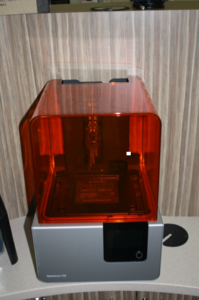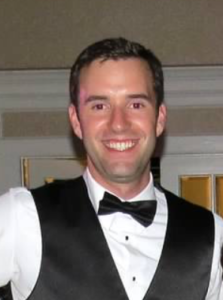Every orthodontic residency in the country sets out to educate its students with the greatest amount of knowledge and skills possible in order to prepare them for a successful career. Although some aspects of orthodontics have not changed over the years, certain techniques used today are vastly different from those in the past. Recently, Eastman Institute for Oral Health has incorporated a multitude of new technologies into the orthodontic program in an effort to expose the residents to all that the field has to offer.
 Here at Eastman, we have been able to apply intraoral scanning and 3D radiography to our diagnosis and treatment planning. These tools have been very exciting to learn. Our CBCT machine has been instrumental in cases involving craniofacial dismorphologies, TMJ disorders, impacted canines, and more. The 3D scanner has allowed for easy storage and organization of records, and very quick, accurate communication with labs for appliance fabrication. Exposure to both of these technologies allows residents to be comfortable and competent when speaking with orthodontic vendors at conferences and orthodontic practitioners in the community.
Here at Eastman, we have been able to apply intraoral scanning and 3D radiography to our diagnosis and treatment planning. These tools have been very exciting to learn. Our CBCT machine has been instrumental in cases involving craniofacial dismorphologies, TMJ disorders, impacted canines, and more. The 3D scanner has allowed for easy storage and organization of records, and very quick, accurate communication with labs for appliance fabrication. Exposure to both of these technologies allows residents to be comfortable and competent when speaking with orthodontic vendors at conferences and orthodontic practitioners in the community.
In treatment, we are exposed through lectures and clinical experience to many contemporary techniques. TAD placement, aligner therapy, micro-osseous perforation, vibratory orthodontic devises, and 3D surgical planning have all been integrated into the curriculum. These treatment modalities are becoming fundamental to orthodontic practice, and exposure in residency has been extremely beneficial. Additionally, alumni have donated a 3D printer and the clinic is also in the process of acquiring a soft tissue laser. It will be exciting to see how these two instruments will add to the quality of treatment at Eastman.
Ultimately, the landscape of orthodontics changes rapidly, and the basics we learn in residency are changing with it. It is critical for our educational institutions to continually increase exposure to newer techniques to create the best possible learning environment. It is true that learning will continue during each year of practice following residency, but building the basics during this time has been Eastman’s goal, even as the definition of the “basics” continues to expand significantly.
– Patrick Scannell – Eastman Institute for Oral Health, 2nd year resident

